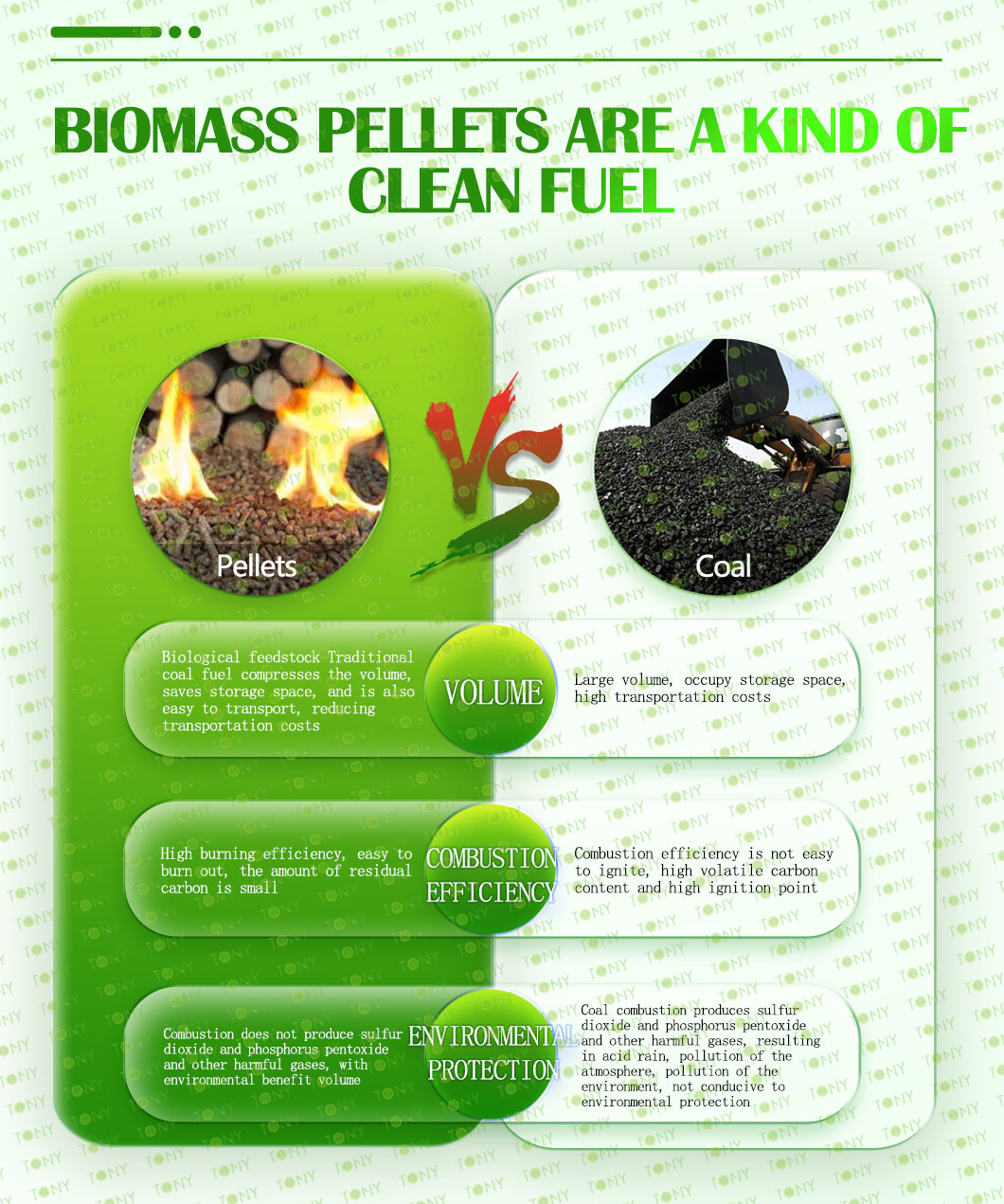China's raw materials are quite rich: "Straw, wood raw materials, rice husks, peanut shells, etc. are inexhaustible and useless. Traditional coal fuel has gradually withdrawn from the stage of history, and the pellet fuel produced by biomass pelletizers is being widely used in civil heating, industrial boilers and other fields.
So what are the differences between biomass pellets and coal? Or what are the advantages of biomass fuel over coal fuel? Let's take a look together:
1. Hydrogen content
Biomass pellet fuel contains a little more hydrogen and has a significantly greater volatile property. Most of the carbon in biomass combines with hydrogen to form low-molecular hydrocarbons. After reaching a certain temperature, it decomposes thermally to precipitate volatile components, so biomass fuel is easy to ignite.
2. Carbon content
Biomass pellets contain less carbon content, and the highest carbon content is only about 50%, which is lower than that of coal-fired boilers.
3. Density comparison
The density of biomass fuel is small, significantly lower than that of coal, has a relatively loose texture, and is easy to burn out. The remaining carbon content in ash charcoal is less than that in coal ash.

4. Comparison of oxygen content
Biomass pellet fuel contains a lot of oxygen, which is significantly more oxygen than coal, which makes the biomass fuel have a low calorific value.
5. The CO2 released by biomass is very low, which can be considered as zero CO2 emissions compared to coal-fired boilers. Compared with sulfur content, biomass fuel has low sulfur content, which is mostly less than 0.12%, and the boiler does not need to be equipped with a desulfurization device.
6. Biomass pellets can be mixed with coal to burn, improving combustion efficiency. Taking straw pellets as an example, burned ash can be used to make fertilizers, waste can be recycled, and fossil fuel coal is difficult to achieve.





















